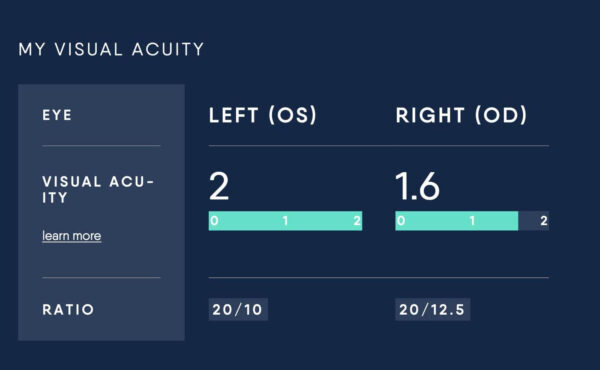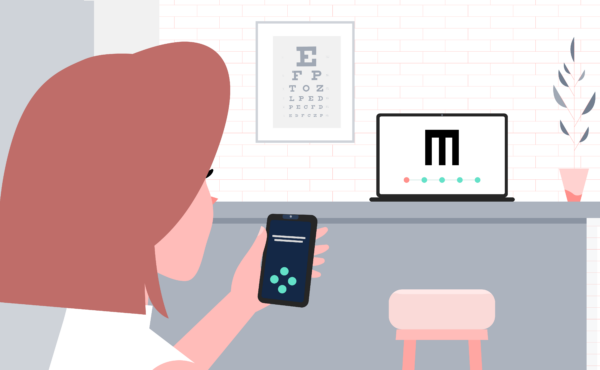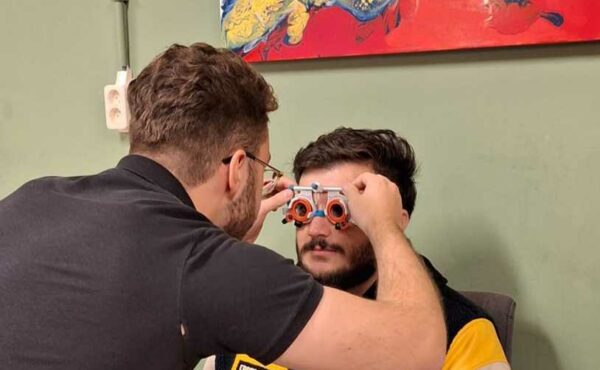Posted on 21 01 19
How do I read my visual acuity results?
Visual acuity indicates the sharpness or your vision. It refers to the ability to recognize signs on a standardized chart from a specific viewing distance.
There are several ways to express the measured visual acuity; we use the decimal as well as the 20/20-system.
Decimal: The visual acuity can be expressed in decimal or percentage for example 0.8 (80%), 1.0 (100%), or 1.2 (120%). In this system, 1.0 or 100% means the average vision, 2.0 or 200 % is the highest possible value and indicates very sharp, way above-average vision.
“20/20-vision” is widely used, especially in the US, and means that you can see clearly at 20 feet what the average person sees at that distance. If the second number is higher than 20, it means your vision is below average and if it’s smaller than 20, your vision is above average. As an example, a person with 20/40-vision sees at 20 feet, what an average person can see at 40 feet away. A person with 20/10-vision, however, can see objects clearly at 20 feet, while the average person needs to stand closer, at 10 feet, to see it.
Visual acuity can be measured with or without glasses or contacts on. The measure that matters, for example for getting a driver’s license or to determine if someone has poor vision, is the visual acuity measured wearing glasses or contacts.
Visual acuity is a great standardized way to see how well one can see, but does not include the values you need to buy glasses or lenses such as Sphere, Cylinder and Axis. You can get these details by getting your eye test results validated by one of the easee optometrists. In case that is not possible for some reason, you can visit a nearby optician or optometrist to receive a full eyewear prescription.
Furthermore, visual acuity does not tell you everything about the functioning of the eye. Other methods to test the visual function are, for example, contrast sensitivity test, visual fields test and colour test charts.



